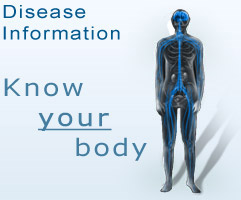Asthma
What is asthma?
Asthma is a condition that affects the airways (bronchi) of the lungs, causing them to constrict (become narrow) when exposed to triggers such as cold, smoke or even due to infections of the upper airways. This results in the typical symptoms of wheezing, coughing, tight chest and shortness of breath. The extent of the narrowing and how long each episode lasts can vary greatly.
Asthma affects millions of people worldwide. Many different genetic and environmental factors play a role in causing asthma. Symptoms can range from mild to severe. Asthma cannot be ‘cured', but treatment usually works well to ease and prevent symptoms.
The purpose of asthma treatment is to manage the condition in order for the patient to lead a normal life. Being well educated about the condition and being active in managing it are critical in achieving this.
The severity of asthma is an important factor in determining an appropriate treatment plan. Asthma can be classified as mild, moderate or severe, based on a number of factors.
Successful management of asthma involves four components:
- Understanding the condition and how it is treated.
- Controlling asthma triggers.
- Monitoring symptoms and lung function.
- Medication.
What causes asthma?
The interaction of certain genes with environmental factors results in changes in the small airways of the lungs. The inflammation in the airways causes swelling of the muscle layer and increased reactivity to allergens (triggers) with increased secretion of mucus. It is then more difficult for air to enter and exit the lungs. This leads to wheezing and breathlessness.
Asthma triggers
Symptoms vary at different times and may flare up due to a number of triggers. Recognising these triggers may assist in the avoidance of symptoms. You may avoid the trigger completely, limit your exposure to it, or take an extra dose of the bronchodilator inhaler.
Some common triggers include:
- inhaled allergens (dust, animal fur, pollens, smoke);
- respiratory infections;
- exercise;
- anxiety or emotional stress;
- certain medication (anti-inflammatories such as aspirin and ibuprofen); and
- menstrual cycle in women.
Symptoms of asthma
- Coughing.
- Wheezing.
- Breathlessness.
- Sensation of a ‘tight' chest.
Symptoms may be worse at night, resulting in disturbed sleep. They may occur more frequently or only in certain seasons (seasonal symptoms), or only when exercising or engaging in strenuous activity (exercise-induced asthma).
Each episode of symptoms may last for a short while, or persist for days or weeks unless treated. They may also develop gradually or rapidly.
Diagnosis of asthma
Asthma is diagnosed on the history of the symptoms, a clinical examination and tests of lung function.
Spirometry is a specialised test that measures the flow of air in and out of the lungs. This test is to confirm the diagnosis and only requires the patient to breathe into a tube connected to the measurement apparatus.
Monitoring the control of asthma is best achieved by the regular use of a peak-flow meter, a small device that measures the rate at which an asthmatic can exhale. This rate depends on the degree to which the airways are narrowed and is compared to a standard based on age, height and gender (usually worse narrowing results in a lower rate of exhalation).
The peak expiratory flow rate (PEFR) measurement can be used to monitor lung function and response to treatment, assess the severity of asthma attacks, and guide decisions regarding treatment. Peak-flow meters are inexpensive and easy to use. PEFR is usually measured in the morning and before bedtime.
Using an asthma diary to record daily peak-flow readings and asthma symptoms can help patients to identify a cause-and-effect relationship between exposure to certain asthma triggers, decreases in peak flow and worsening of asthma symptoms. The diary can also help monitor medication usage.
Treatment of asthma
Medication is the main form of treatment in managing asthma. The medication may vary according to the type and severity of asthma. An individual's asthma treatment plan must constantly be adjusted because the severity of the condition changes over time. As symptoms improve, medication should be reduced. As symptoms worsen, medication should be increased.
Inhalers
Most asthmatics are treated with inhalers. Inhalers deliver a small dose of medication directly to the airways. The dose is enough to treat the airways. However, only a small amount of medication gets into the rest of your body, so side effects are unlikely or minor. There are various inhaler devices available, to suit different people. A doctor will advise on the different types and prescribe the appropriate ones.
Inhalers can be grouped into 'relievers', 'preventers' and 'long-acting bronchodilators':
- Relievers: A reliever inhaler is taken 'as required' to ease symptoms. The medication in a reliever inhaler relaxes the muscle in the airways, making them open wider and relieving symptoms. This medication is also known as 'bronchodilators' as they dilate (widen) the airways. There are several different reliever medications available, such as salbutamol and terbutaline. These are available in various brands made by different companies. If you only have symptoms every 'now and then', then the occasional use of a reliever inhaler may be sufficient. However, if you need a reliever inhaler to ease symptoms thrice weekly or more, a preventer inhaler is usually advised.
- Preventers: A preventer inhaler is taken every day to prevent symptoms from developing. It does not provide immediate relief from symptoms. The medication used in preventer inhalers is a corticosteroid (e.g. beclomethasone, fluticasone), of which there are various brands. Steroids work by reducing the inflammation in the airways. When the inflammation has gone, the airways are much less likely to become narrow and cause symptoms. It may take up to 14 days for the steroid in a preventer inhaler to build up its effect. However, after about a week of treatment, the symptoms may be gone completely, or will have reduced. It may take up to six weeks for maximum benefit, at which point you need not use a reliever inhaler very often (if at all).
- Long-acting bronchodilators: A long-acting bronchodilator may be advised in addition to a steroid inhaler. One may be needed if symptoms are not fully controlled by the steroid inhaler alone. The medication in these inhalers work in a similar way to 'relievers', but work for up to 12 hours after each dose. They include salmeterol and formoterol. Some brands of inhalers contain a steroid plus a long-acting bronchodilator for convenience.
Medication
Most asthmatics don't need medication (e.g. theophyllines, montelukast), as inhalers usually work well. However, in some cases a tablet (or liquid form for children) is prescribed in addition to inhalers if symptoms are not fully eased by inhalers alone. Some young children use liquid medication instead of inhalers (e.g. ketotifen).
A short course of steroid tablets (such as prednisolone) is sometimes needed to ease a severe or prolonged asthma attack. Steroid tablets reduce the inflammation in the airways. For example, a severe attack may occur if you have a cold or chest infection.
Some people worry about taking steroid tablets. However, a short course of steroid tablets (for about a week) usually works very well and is unlikely to cause side effects. Most side effects caused by steroid tablets occur if you take them for a long time (several months), or if you take frequent short courses of high doses.
A common treatment plan for a moderate asthmatic is:
- a preventer inhaler taken each morning and at bedtime, which usually prevents symptoms throughout the day and night;
- a reliever inhaler for when breakthrough symptoms occur (during an episode of respiratory infection);
- an extra dose of a reliever inhaler just before exercise to prevent symptoms;
- an increase in the dose of the preventer inhaler for a while if you have a respiratory infection, or during seasons when symptoms get worse; and
- a long-acting bronchodilator, or tablets, if symptoms are not controlled with the above.
Important points to remember
- It is vital that you know how to use inhalers correctly. In some asthmatics, symptoms persist simply because they use their inhaler incorrectly and the medication from the inhaler does not reach the airways. The use of a spacer increases the amount of medication being delivered to the lungs.
- Consult a doctor or other healthcare practitioner if symptoms are not fully controlled, or if they worsen, for example:
o a night time cough or wheeze becomes troublesome;
o sport is being affected by symptoms;
o a peak-flow readings are unusually lower; and
o reliever inhaler is needed more often than is normally necessary.
An adjustment in inhaler timings or doses may control these symptoms.
- Consult your doctor immediately if severe symptoms develop that are not eased by a reliever inhaler. Emergency treatment with high dose reliever medication and other treatments may be necessary and sometimes hospitalisation. A severe asthma attack can be life threatening. If in doubt, always call a doctor.
Influenza vaccination is recommended (the annual 'flu jab') to minimise the chances of developing a severe flu, thus reducing the likelihood of worsening asthma symptoms.
References
1. MARTINEZ FJ, STANDIFORD C, GAY SE. March 2005. Is it asthma or COPD? The answer determines proper therapy for chronic airflow obstruction. Postgraduate Medicine. 117(3).
2. May 2000. Guideline for the management of chronic asthma in adults. South African Medical Journal. 90(5): 540-552.
3. WORKING GROUP OF THE ALLERGY SOCIETY OF SOUTH AFRICA. 2000 updated. Guideline for chronic childhood asthma (Endorsed by the South African Pulmonology Society).
 TransmedBanner4.jpg)

